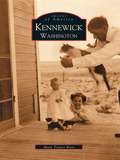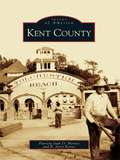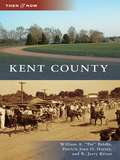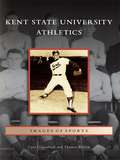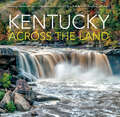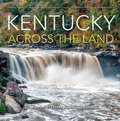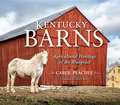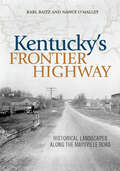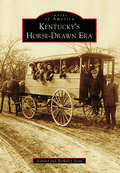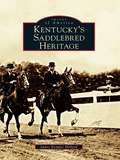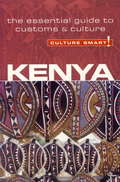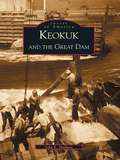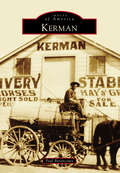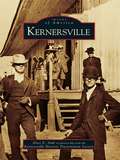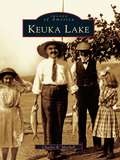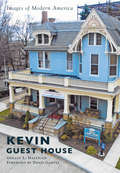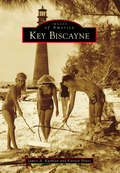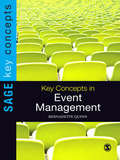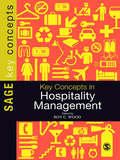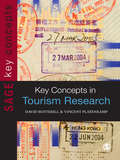- Table View
- List View
Ken Reid's Hometown Hockey Heroes
by Ken ReidFrom Sportsnet Central host and broadcaster Ken Reid comes an inspiring and entertaining new collection of hockey stories about local legends who define the game and its values. In many communities across Canada, hockey lives in the nearby arenas and leagues that forge both decades-long rivalries and unbreakable friendships. Fans show up to cheer not for distant NHL superstars, but for the homegrown heroes who define their town. These players don&’t always make it to the big leagues, but they inevitably become legends. In this entertaining collection, Canadian broadcaster and Sportsnet Central host Ken Reid tells their uplifting stories, from Pictou, Nova Scotia, to Kimberley, British Columbia—and everywhere in between. There&’s Robbie Forbes, who arrived in Newfoundland in the mid-eighties still dreaming of the pros and ended up giving the town a dream of its own when he led the Corner Brook Royals to a Canadian Senior Hockey title. He also happens to be Sidney Crosby&’s uncle. In a legendary Ontario community, the name Paul Polillo is spoken in the same reverential breath as Wayne Gretzky in their shared hometown of Brantford. There&’s also the tragic story of George Pelawa, who may have been the inspiration for Tom Cochrane & Red Rider&’s famous song &“Big League.&” And Tyson Wuttunee, an Indigenous player in Saskatchewan who, through hockey, found the family and home he&’d always longed for. Featuring heartwarming stories of grit, leadership, and lifelong bonds, Ken Reid&’s Hometown Hockey Heroes celebrates how hockey, and the values the game teaches, can shape our communities for the better.
Kennewick, Washington
by Mary Trotter KionCaptured here in over 200 vintage images is a photographic documentation of a section of America that was all but uninhabitable until the late 1800s. Before that time, the area was the home of a few scattered Native American bands and traditional eastern Washington desert wildlife: sagebrush, rattlesnakes, and coyotes. Only through the efforts of the railroad and the entrepreneurs, explorers, trappers, settlers, and homesteaders was this area, located along the banks of the mighty Columbia River as well as the Snake and Yakima rivers, transformed into a bountiful oasis in the desert.Kennewick is on the direct route of the Oregon Trail, as well as the Lewis and Clark trail. The story of Kennewick begins in 1883-with the arrival of the railroad and an era when steamboats and the men who plied them were pivotal in the town's settlement. These vintage images tell the story of Kennewick's early businesses, frontier homes, schools, churches, and community experiences.
Kensuke's Kingdom
by Michael MorpurgoWashed up on an island in the Pacific with his dog Stella, Michael struggles to survive but can't find food and water. Michael realizes that he and Stella are not alone. His fellow castaway slowly lets the boy into his world and talks about escape.
Kent County
by R. Jerry Keiser Patricia Joan HorseyKent County, Maryland, has retained its serene beauty and tradition despite the passage of time. Situated on a peninsula where the Chester and Sassafras Rivers meander into the Chesapeake Bay, Kent County boasts 209 miles of scenic shoreline. The rich history of the waterfront towns features the 1782 founding of Washington College, the only college named for George Washington with his express consent. Chestertown, the county seat, is home toEmmanuel Church, where the name of the Protestant Episcopal denomination was proposed and adopted in 1780. Tolchester Beach's many amusement rides will be remembered by generations of tourists and KentCounty residents.
Kent County
by R. Jerry Keiser Patricia Joan Horsey William A. BiddleKent County has retained its serenity and beauty in the face of the passage of time. Situated on a peninsula where the Chester and Sassafras Rivers amble gently into the Chesapeake Bay, Kent County boasts miles of picturesque shoreline that provide perfect frame for the miles of undeveloped farmland that makes up the heart of the county.
Kent State University Athletics (Images of Sports)
by Theresa Walton Cara GilgenbachEstablished in 1910 by the State of Ohio as a teachers' training college, Kent State Normal School rapidly evolved into a major research university during the first half of the 20th century. Kent State University Athletics chronicles the highlights of sports history during the institution's first 100 years. As athletics evolved from its close relation to physical education training and intramural play to varsity intercollegiate programs competing at the Division I level, a number of outstanding athletes, teams, and coaches arose, including several Olympic competitors and future professional athletes.
Kent at War 1939–45 (Your Towns & Cities in World War Two)
by Tanya WynnThis comprehensive account of the southern English county during WWII covers everything from the Dunkirk evacuations to the Battle of Britain and more. Located along the English Channel, the southeastern county of Kent played a significant role in the Second World War. This volume covers Kent&’s many contributions—both civilian and military—throughout the conflict. The chronicle details how the Dover Patrol kept Allied shipping safe in the English Channel, as well as the preparation and aftermath of the Dunkirk evacuations of May 1940, with all of the vessels leaving from and returning to Kent ports and harbors. Kent&’s numerous airfields were of vital importance during the Battle of Britain between July and October 1940. The Richborough camp, set up in 1939 at the old First World War Kitchener barracks, provided safe haven to thousands of German and Austrian Jewish refugees. This book includes never before published letters written to one of the camps residents during his stay there. Historian Tanya Wynn also discusses the county's military hospitals and pow camps, it&’s Victorian Cross and George Medal winners, and the restricted areas that adorned the coast as the people of Kent battened down the hatches, knowing that they were the very first line of defense in case of a German invasion.
Kentucky Across the Land
by Lee Mandrell DeeDee Niederhouse-MandrellTransport yourself to the Bluegrass State with this photographic tribute to iconic spots from Mammoth Cave National Park to Buffalo Trace Distillery.Known for its rolling hills, scenic Thoroughbred farms, and renowned state parks, Kentucky offers enjoyment for those seeking stunning landscapes, natural wonders, small town charms, and bourbon country adventures. Follow photographers Lee Mandrell and DeeDee Niederhouse-Mandrell on a visual journey across the Bluegrass State, as they travel from Cumberland Falls State Resort Park to Mammoth Cave and National Bridge National Parks, showcasing the exquisite scenery and natural heritage along the way.Featuring more than 130 breathtaking photos, Kentucky Across the Land inspires travelers to take their own journeys to explore the history at the Lincoln Homestead State Resort Park, the untouched natural beauty of Red River Gorge and Land Between the Lakes, or the picturesque cascades along Flat Lick Creek at Flat Lick Falls.
Kentucky Across the Land
by Lee Mandrell DeeDee Niederhouse-MandrellTransport yourself to the Bluegrass State with this photographic tribute to iconic spots from Mammoth Cave National Park to Buffalo Trace Distillery.Known for its rolling hills, scenic Thoroughbred farms, and renowned state parks, Kentucky offers enjoyment for those seeking stunning landscapes, natural wonders, small town charms, and bourbon country adventures. Follow photographers Lee Mandrell and DeeDee Niederhouse-Mandrell on a visual journey across the Bluegrass State, as they travel from Cumberland Falls State Resort Park to Mammoth Cave and National Bridge National Parks, showcasing the exquisite scenery and natural heritage along the way.Featuring more than 130 breathtaking photos, Kentucky Across the Land inspires travelers to take their own journeys to explore the history at the Lincoln Homestead State Resort Park, the untouched natural beauty of Red River Gorge and Land Between the Lakes, or the picturesque cascades along Flat Lick Creek at Flat Lick Falls.
Kentucky Agate: State Rock and Mineral Treasure of the Commonwealth
by Roland L. McIntosh Warren H. AndersonThis informative and fully illustrated volume explores the untold story of agate gemstones hidden in Kentucky’s scenic Knobs Region.With their fine grain and rich assortment of colors, agate stones are coveted by collectors and becoming rarer across the globe. Some of the most beautiful specimens in the world have been found in the rugged terrain of eastern Kentucky. In Kentucky Agate, authors Roland L. McIntosh and Warren H. Anderson reveal the beauty and diversity of this sought-after stone with hundreds of color photographs.Kentucky Agate also reveals locations where agate may be found, offering maps of the region surrounding the city of Irvine, Kentucky, including parts of Estill, Powell, Jackson, Menifee, Madison, and Lee counties. With detailed photographs revealing aspects of the rock not visible to the naked eye, this book also provides fascinating information on the history, geology, chemistry, and formation of the mineral.
Kentucky Barns: Agricultural Heritage of the Bluegrass
by Carol PeacheeFrom horses to tobacco to bourbon, the barn is at the heart of Kentucky’s heritage and industry and is a staple of the Bluegrass landscape. In Kentucky Barns: Agricultural Heritage of the Bluegrass, Carol Peachee showcases the barns with exquisite photography. From elegant Thoroughbred farms to historical treasures like the 1803 stone barn of Runnymede Farm in Bourbon County, Peachee travels across the state to capture and preserve the diverse architecture, heritage, and design that make these structures special. A beautiful tribute to the legacy of the Bluegrass State, Kentucky Barns features nearly 400 full-color photos of both the interior and exterior of these beautiful and functional icons of American culture and industry.
Kentucky's Frontier Highway: Historical Landscapes Along the Maysville Road
by Karl Raitz Nancy O'Malley“A remarkable historical and geographical study” of a road linking Lexington and Maysville, Kentucky, and its influence on America (West Virginia History).Eighteenth-century Kentucky beckoned to hunters, surveyors, and settlers from the mid-Atlantic coast colonies as a source of game, land, and new trade opportunities. Unfortunately, the Appalachian Mountains formed a daunting barrier that left only two primary roads to this fertile Eden. The steep grades and dense forests of the Cumberland Gap rendered the Wilderness Road impassable to wagons, and the northern route extending from southeastern Pennsylvania became the first main thoroughfare to the rugged West, winding along the Ohio River and linking Maysville to Lexington in the heart of the Bluegrass.Kentucky’s Frontier Highway reveals the astounding history of the Maysville Road, a route that served as a theater of local settlement, an engine of economic development, a symbol of the national political process, and an essential part of the Underground Railroad. Authors Karl Raitz and Nancy O’Malley chart its transformation from an ancient footpath used by Native Americans and early settlers to a central highway, examining the effect that its development had on the evolution of transportation technology as well as the usage and abandonment of other thoroughfares, and illustrating how this historic road shaped the wider American landscape.“The authors demonstrate quite convincingly that rich local history lies along our roads. They unearthed an abundance of behind-the-scenes information that is invisible to us as we barrel down the highway. It should give all readers pause to consider how much more they could know about the places they travel through.” —Craig E. Colten, author of Perilous Place, Powerful Storms: Hurricane Protection in Coastal Louisiana“A very well researched and well-written book that makes a significant contribution to the study of American roads, U.S. settlement history, and Kentucky history in particular. The authors’ approach is broad and multifaceted, well organized, and keenly focused on the myriad aspects of an important path, the land and time it transits. This is a fine holistic study of an important and complex road and its many geographical and historical components.” —Drake Hokanson, author of Lincoln Highway: Main Street across America“This notable and ably-illustrated volume . . . captures the rigors of frontier Appalachian geography and the utter ingenuity of diverse peoples bent on moving west. The road is perhaps the greatest of American themes?it encapsulates freedom, mobility, possibility, escape, commerce, crime and calumny, adventure, and romance. Thank goodness we have these two able storytellers to give us the narrative of the Maysville Road.” —Paul F. Starrs, Regents & Foundation Professor of Geography (University of Nevada), and recipient, J.B. Jackson Prize, Association of American Geographers
Kentucky's Horse-Drawn Era
by Jeanine Scott Berkeley ScottImages of America: Kentucky's Horse-Drawn Era takes a look at the days when animals--mostly horses and mules--supplied the "horsepower" for daily life in Kentucky. The animals' work included hauling buggies, carriages, wagons, hearses, circus wagons, parade floats, bookmobiles, coal cars, school buses, and everything and everyone in between. This book even has a photograph of a mule team pulling a two-story house down the street of a small town in Kentucky; other unusual images feature a "high-diving" horse and the winners of the Mule Derby. These vintage photographs highlight horses and mules in some of the many roles they filled before the advent of the automobile, the pickup truck, and the tractor.
Kentucky's Saddlebred Heritage (Images of America)
by James Kemper MillardLong associated with fine Thoroughbred horses, Kentucky's Bluegrass region is also home to America's oldest indigenous breed: the American Saddlebred horse. A composite of several breeds, the Saddlebred was developed by 18thcentury colonists who sought a goodlooking, sensible, adaptable, and comfortable animal to ride and drive. These traits made it the mainstay of the Confederate cavalry during the Civil War and the choice mount of many generals on both sides. As the Industrial Revolution replaced the need for working horse power, the Saddlebred evolved naturally into recreational activities. Affectionately known as "peacock of the show ring," the Saddlebred's beauty, expression, and athleticism epitomize the essence of a show horse. In many ways, the breed's history parallels that of America and unfolds in pictures in Kentucky's Saddlebred Heritage.
Kenya - Culture Smart!
by Jane BarsbyCulture Smart! provides essential information on attitudes, beliefs and behavior in different countries, ensuring that you arrive at your destination aware of basic manners, common courtesies, and sensitive issues. These concise guides tell you what to expect, how to behave, and how to establish a rapport with your hosts. This inside knowledge will enable you to steer clear of embarrassing gaffes and mistakes, feel confident in unfamiliar situations, and develop trust, friendships, and successful business relationships.Culture Smart! offers illuminating insights into the culture and society of a particular country. It will help you to turn your visit-whether on business or for pleasure-into a memorable and enriching experience. Contents include:* customs, values, and traditions* historical, religious, and political background* life at home* leisure, social, and cultural life* eating and drinking* do's, don'ts, and taboos* business practices* communication, spoken and unspoken"Culture Smart has come to the rescue of hapless travellers." Sunday Times Travel"... the perfect introduction to the weird, wonderful and downright odd quirks and customs of various countries." Global Travel"...full of fascinating-as well as common-sense-tips to help you avoid embarrassing faux pas." Observer"...as useful as they are entertaining." Easyjet Magazine"...offer glimpses into the psyche of a faraway world." New York Times
Keokuk and the Great Dam
by John E. HallwasThis remarkable pictorial history tells the story of an engineering marvel: the first dam built across theMississippi River (from 1910-1913), and the historicMidwestern community that fostered the world-famoushydroelectric project. Keokuk and the Great Dam is the story of a colorful and historic river town with a dream of economic development and cultural progress; a self-taught engineer who took on a challenge that no one else wanted to attempt; and a massive construction effort that pitted men and machines against the awesome power of America's greatest river. Completed shortly before WWI, the Keokuk dam (now known as Lock and Dam No. 19) was the culmination of a long struggle to employ the Mississippi River for hydroelectric power and to improve navigation on the great waterway. In frontier days the Des Moines Rapids, stretching north from Keokuk, prevented loaded steamboats from moving upriver. They also created a business opportunity for local residents. A rapidly growing town by the 1850s, Keokuk went into decline for many years when it failed to secure adequate railroad connections. But the coming of hydroelectric powerfostered a new dream, and local leaders set out to harness the great river. What followed was a dramatic effort that drew international attention, produced the world's second largest dam (at the time), and forever changed both the community and the fabled American waterway.
Kerman (Images of America)
by Paul BetancourtKerman sits in the heart of California's great San Joaquin Valley. First established in 1891 as a train stop for the Southern Pacific Railroad, the town site was originally named Collis Station for the railroad's president, Collis P. Huntington. Even in its earliest days, agriculture was the driving force behind Kerman's economy. Advances in irrigation as well as Kerman's close proximity to two of the region's largest rivers--Kings and San Joaquin--resulted in abundant access to water, attracting farmers and land investors at the start of the 20th century. As the community grew, alfalfa hay, raisins, and dairy products became mainstays in Kerman's agricultural production. By 1910, Kerman had a volunteer fire department, a library, and new businesses. Images of America: Kerman explores the first 80 years of a town that continues to grow and diversify.
Kernersville (Images of America)
by Kernersville Historic Preservation Society Alice E. SinkNative Americans first inhabited the eastern Forsyth County area, a natural watershed and source of six rivers and creeks. About 1756, Irishman Caleb Story settled here on 400 acres of wooded land. Years later, Story sold his land to David Morrow for a purported four gallons of rum. About 1771, William Dobson purchased the original acreage and additional tracts and built an inn near what is now Mountain Street and Main Street. He named this junction Dobson'sCrossroads. On June 2, 1791, President George Washington ate breakfast at Dobson's Tavern. On November 14, 1817, German-born Joseph Kerner (also spelled K¶rner) purchased the land and renamed the area Kerner's Crossroads. This begins the story of Kernersville. The same roads, still graced with historic churches, stores, and homes, crisscross at the heart of this community. K¶rner's Folly, which contains 22 rooms, housed the first private little theater in America.
Ketchikan: Alaska's Totemland
by Mary G. Balcombrief, but interesting, history of Ketchikan Alaska and it's surrounding area. Covers both the local indians and the white settlers.
Keuka Lake
by Charles R. MitchellNestled among the hills of western New York State is the beautiful lake Keuka, the Indian word for "canoe landing." Once visited, the loveliness and serenity of this particular lake in New York's Finger Lakes region draws people back. Visitors return to stay for a week or the summer, and tourists come back, often annually. Many who have lived or summered at the lake return to retire. Keuka Lake brings back the time period from 1850 to 1960, the era of black-and-white photography. Featured are the local grapes and wineries, the steamboats, the commercial activities on and around the lake, and the lake itself. Today, the boats are no longer steam powered and the wineries are more plentiful, but other aspects of life have not changed. The residents are hospitable; the pace is slow; the lake is resplendent and inviting.
Kevin Guest House (Images of Modern America)
by Gerald L. Halligan Denis GarveyWhile unknown to many living in western New York, the Kevin Guest House has served thousands of critically ill individuals and their families for over 40 years. Quietly nestled within the expanding Buffalo Niagara Medical Campus of Buffalo, New York, the demand for the facility continues to increase. The opening chapter is a testimony to the Speyser-Beer family, who originally owned the property. The second and third chapters memorialize the founders of the Kevin Guest House, the Garvey family of Sharon, Pennsylvania. The remaining chapters provide a virtual tour of the grounds and building expansions of 2016.
Key Biscayne
by Kirsten N. Hines James A. KushlanKey Biscayne is an island paradise umbilically connected to Miami by a three-and-a-half-mile-long causeway. Its recorded history is one of the longest in North America, starting five centuries ago with Juan Ponce de León's arrival, the second official landing of Europeans in North America after Columbus. For centuries, Key Biscayne was an important landmark for Gulf Stream mariners, and the Cape Florida Lighthouse, built in 1825, is the oldest remaining structure in the region. The key was the site of an infamous Indian attack, a Second Seminole War military base, scientific expeditions, a Civil War raid, a tropical plantation, and finally a residential village and county, state, and national parks. When the key served as Richard Nixon's vacation White House, its worldwide fame grew. Key Biscayne now hosts a multinational community and hundreds of thousands of visitors annually.
Key Concepts in Event Management (SAGE Key Concepts series)
by Bernadette QuinnIn recent years we have seen an enormous growth of festivals and event activity and the literature within the field is consequently huge. In order to make sense of this rapid and dynamic development, students are dependent on a book that can lead them through the myriad of theoretical frameworks offered.<P> <P> This book naturally situates itself in the middle of this need, offering a comprehensive and illuminating account of the festival and event field. Written with academic rigour yet accessible at the same time, Quinn proves herself to be an outstanding communicator and stimulator of knowledge. <P> International in content and timely in its up to date coverage of key topics, this will be an invaluable reference source for students from Event Management, Tourism and Leisure studies. It will also be of great use for students from Business Studies, Marketing, Cultural Studies and Geography.
Key Concepts in Hospitality Management (SAGE Key Concepts series)
by Roy C. WoodThis edited book covers the major concepts you are likely to encounter throughout their study within the hospitality field, giving a comprehensive and up-to-date overview as well as providing engaging everyday examples from around the world. <P><P> A leading figure in the field, Wood has successfully gathered international contributors with direct experience of hospitality management and the hospitality industry as a whole, ensuring both the academic, geographical and practical integrity of the book. <P> Key Concepts in Hospitality Management is written for undergraduate students and those studying short postgraduate or executive education courses in hospitality. It would also be of use to the general academic reader seeking information on the hospitality industry and hospitality management.
Key Concepts in Tourism Research (SAGE Key Concepts series)
by Vincent Platenkamp Dr David BotterillThis book walks students through the selection and application of research methods within Tourism. Experienced authors introduce the relevant language and theory of key methodologies and then develop them using strategic literature review and the inclusion of international examples which relate directly to tourism. Each concept sets the historical and philosophical context of a method alongside the practical application of the technique and provides: * authoritative and reliable data * informative cross-referencing * detailed discussion of theories and their critics * suggestions for further reading The book is a vital resource for all students of tourism, leisure and management.

